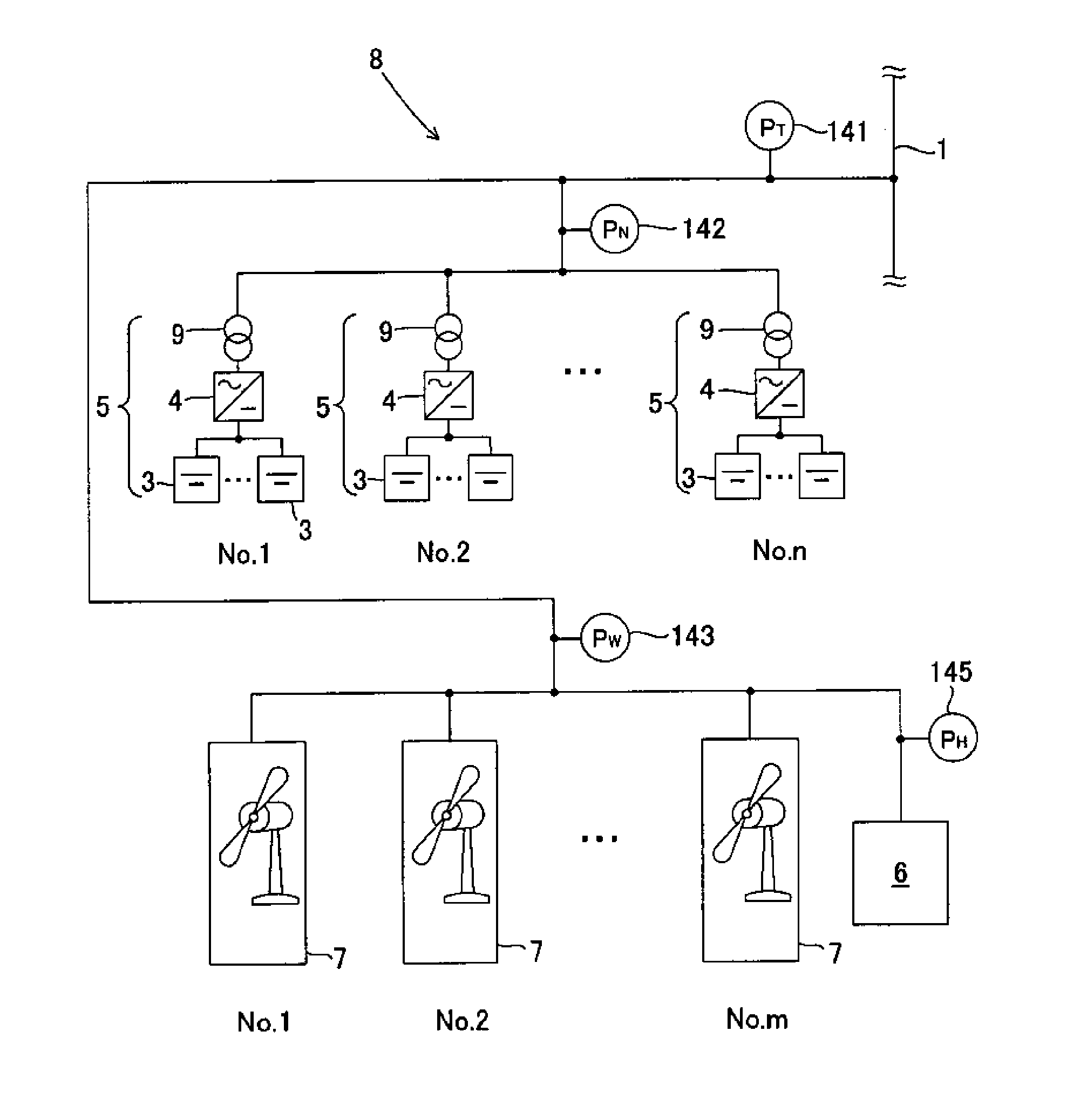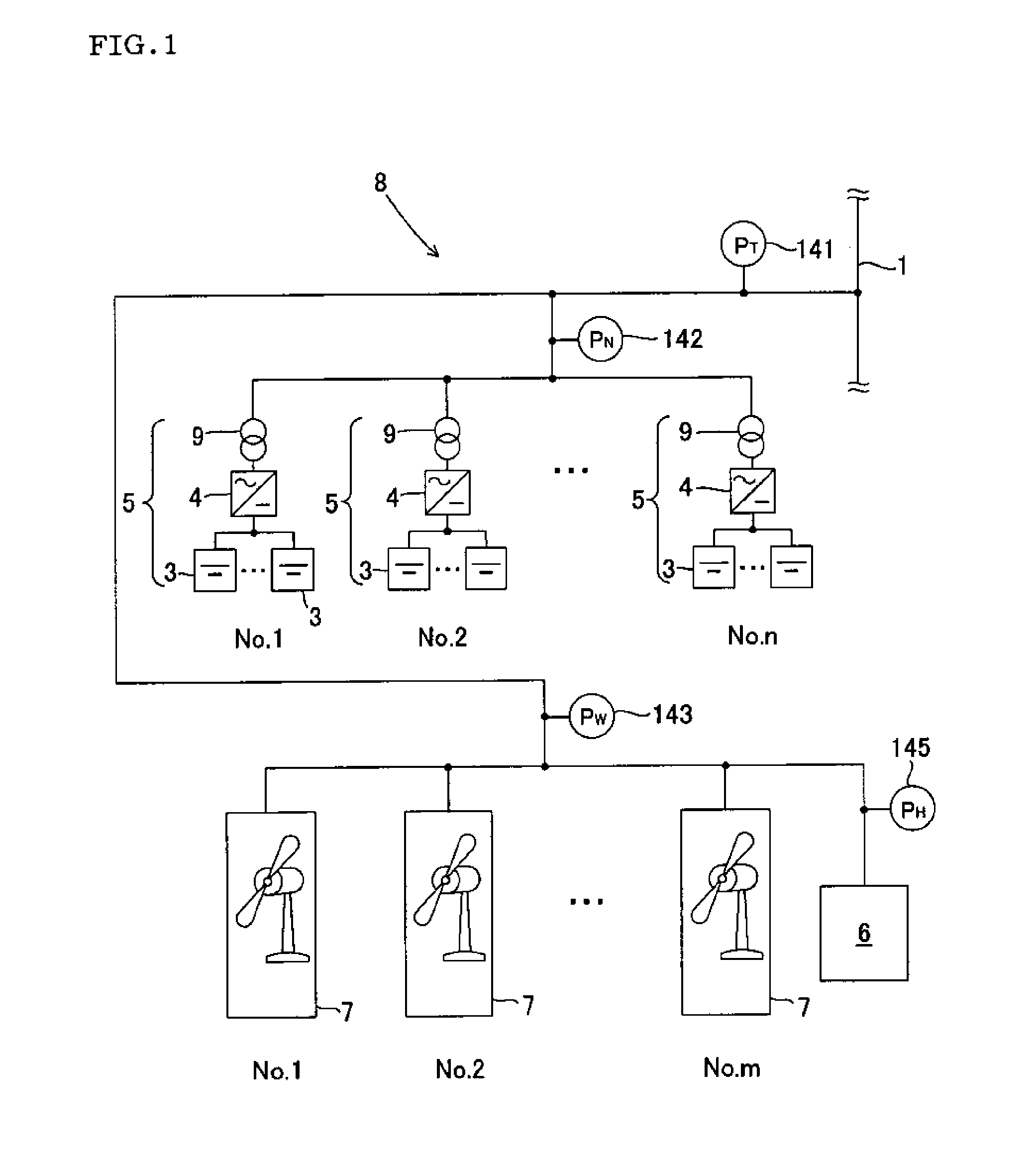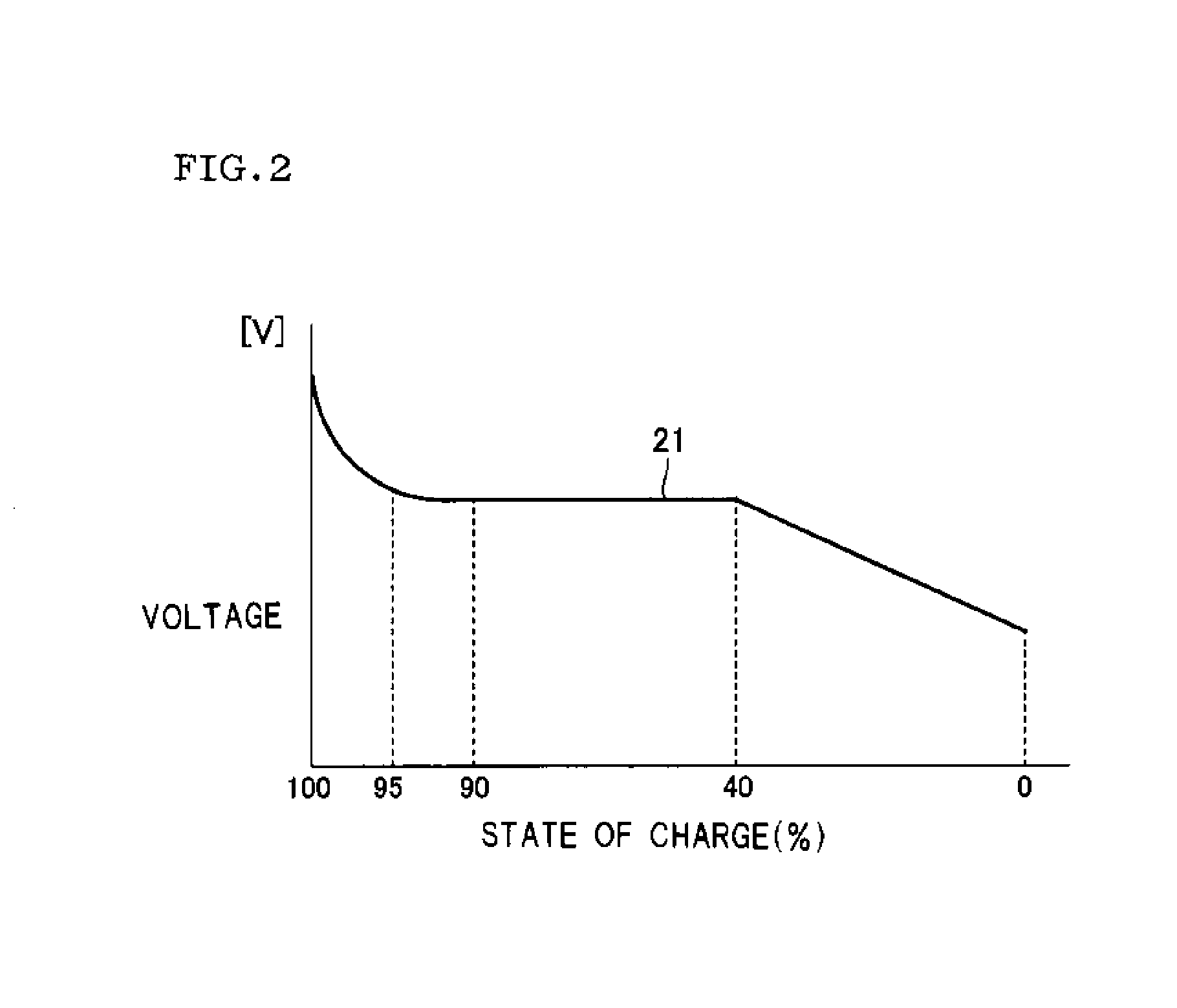Power control method for secondary batteries
- Summary
- Abstract
- Description
- Claims
- Application Information
AI Technical Summary
Benefits of technology
Problems solved by technology
Method used
Image
Examples
example
Example 1
[0084]A grid connection system based on the grid connection system 8 shown in FIG. 1 was constructed to run a simulation of a power control method for secondary batteries of the present invention. Fifteen sodium-sulfur batteries each having a rated power of 2 MW (30 MW in total) and a wind power generator of a rated power of 51 MW were employed.
[0085]The operation plan value PP was changed on the time (section) basis to be set as in Table 1. The fifteen sodium-sulfur batteries were divided as shown in Table 2. With respect to the six sodium-sulfur batteries belonging to the “constant power control” group, the constant power control amount was distributed as shown in Table 2 on the time (section) basis.
TABLE 1No.Section (Sec.)Operation plan value PP (kW)1 0-1000 → 02100-200 0 → 450003200-50045000 → 450004500-60045000 → 0 5600-7000 → 0
TABLE 2Number ofGroup NamebatteriesParameter / setting“Instant2—responsive”group“Delay7Time constant 60 sec.responsive”group“Constant power6Tim...
PUM
 Login to View More
Login to View More Abstract
Description
Claims
Application Information
 Login to View More
Login to View More - R&D
- Intellectual Property
- Life Sciences
- Materials
- Tech Scout
- Unparalleled Data Quality
- Higher Quality Content
- 60% Fewer Hallucinations
Browse by: Latest US Patents, China's latest patents, Technical Efficacy Thesaurus, Application Domain, Technology Topic, Popular Technical Reports.
© 2025 PatSnap. All rights reserved.Legal|Privacy policy|Modern Slavery Act Transparency Statement|Sitemap|About US| Contact US: help@patsnap.com



